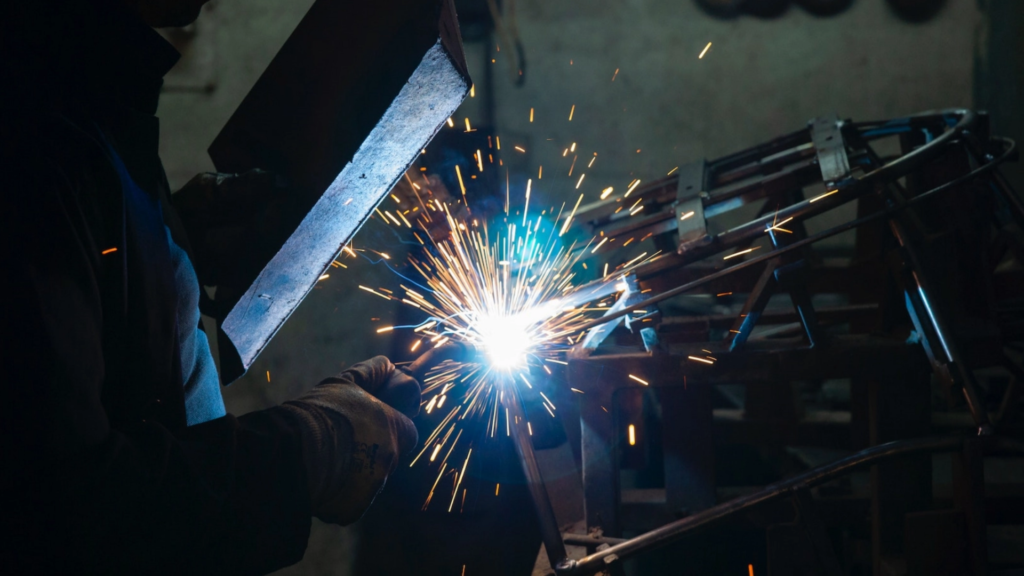When it comes to MIG welding, achieving a good weld is the ultimate goal. But what exactly does a good MIG weld look like? Understanding the visual characteristics of a high-quality weld is essential for welders to assess the strength, durability, and overall integrity of their welds. In this visual guide, we will explore the key indicators of a good MIG weld.
Table of Contents
ToggleUniformity of the Weld Bead
A good MIG weld exhibits a consistent and uniform weld bead throughout its length. The bead should have a smooth and even appearance, with no abrupt variations in width or height. It should flow evenly along the joint, indicating proper heat distribution and fusion.
Adequate Penetration
Proper penetration is a critical aspect of a good MIG weld. The weld should penetrate the base metals sufficiently, ensuring a strong bond. The weld bead should blend seamlessly with the base metal, without any gaps or undercutting. Insufficient penetration may result in weak joints, while excessive penetration can cause burn-through or distortion.
Minimal Spatter
Spatter refers to the tiny metal droplets that can splatter around the weld area during MIG welding. While some spatter is inevitable, a good MIG weld minimizes spatter. Excessive spatter can indicate improper welding parameters, such as excessive wire feed speed or voltage. A clean and spatter-free weld indicates efficient wire melting and smooth transfer.
Consistent Weld Profile
A good MIG weld maintains a consistent weld profile along its length. The width and height of the weld bead should remain relatively constant, demonstrating a steady deposition of weld metal. Inconsistent weld profiles may suggest irregular wire feeding or an unstable arc, which can compromise the weld’s strength and appearance.
Proper Reinforcement
Reinforcement refers to the excess weld metal that extends beyond the joint. A good MIG weld exhibits appropriate reinforcement. It should neither be excessive, causing a bulky and unnecessary buildup, nor insufficient, resulting in weak welds. The reinforcement should be uniform and blend smoothly with the base metal.
No Cracks or Porosity
A good MIG weld is free from cracks and porosity. Cracks are discontinuities in the weld that can compromise its strength, while porosity refers to gas pockets trapped within the weld metal. Both cracks and porosity are indications of welding defects and can lead to structural weaknesses. A sound MIG weld should be solid and without visible cracks or porous areas.
Proper Coloration
The coloration of a MIG weld can provide valuable insights into its quality. A good MIG weld typically exhibits a consistent coloration, with shades ranging from silver to light golden brown. Dark discoloration, excessive heat-affected zones, or inconsistent color patterns may signal issues such as overheating, inadequate shielding gas, or improper welding technique.
Clean Weld Surface
A good MIG weld appears clean and free from contaminants. It should be devoid of slag, spatter, or other foreign materials that can compromise the weld’s integrity. A clean weld surface ensures better adhesion and contributes to the overall aesthetics of the finished weld.
Recognizing the visual characteristics of a good MIG weld is crucial for welders to assess the quality of their work. By paying attention to factors such as uniformity of the weld bead, adequate penetration, minimal spatter, consistent weld profile, proper reinforcement, absence of cracks or porosity, proper coloration, and a clean weld surface, welders can determine whether their welds meet the required standards. Continuous practice, adherence to proper welding techniques, and understanding the visual cues of a good MIG weld will empower welders to consistently produce high-quality welds with confidence and precision.

